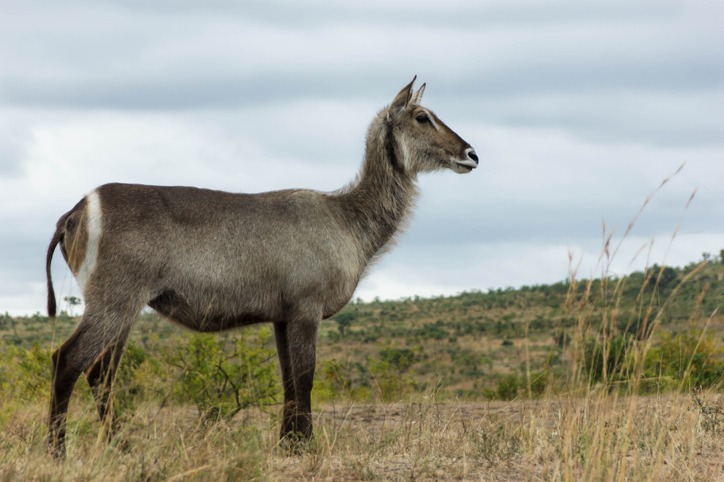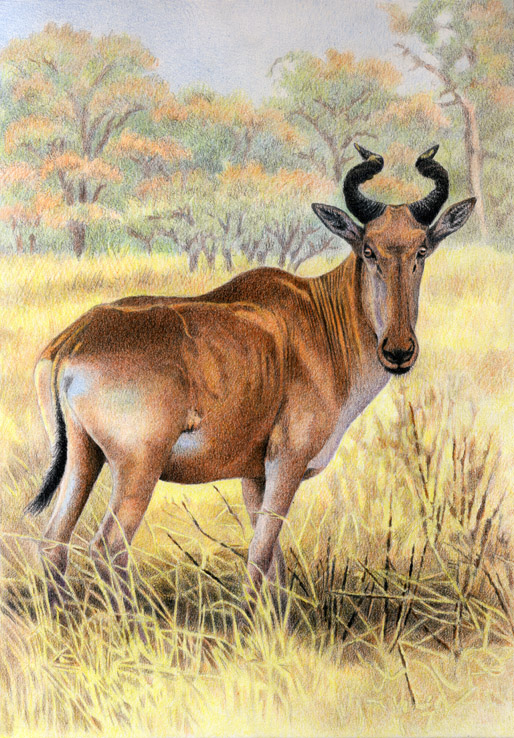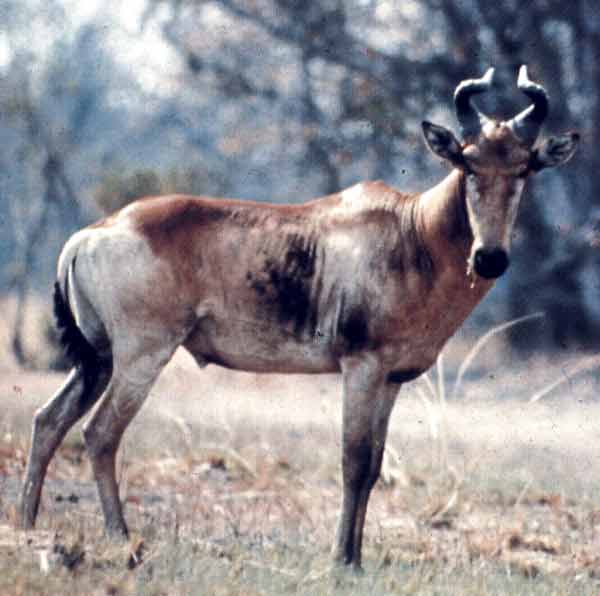The Lichtenstein’s Hartebeest, also known as Alcelaphus buselaphus lichtensteinii, is a hartebeest antelope subspecies commonly found in the savannahs and floodplains of Southeastern Central Africa. Its name was derived from German zoologist Martin Hinrich Carl Lichtenstein. Sometimes, biologists classify the Lichtenstein’s Hartebeest as Sigmoceros lichtensteinii.
The Lichtenstein’s Hartebeest was first described by German naturalist Wilhelm Karl Hartwich Peters in 1849. Hunting for Lichtenstein’s Hartebeest is very popular in Africa due to its high-quality meat and colorful hide. Hunting them is considered relatively easy because they can be easily seen due to their conspicuous coloration. The average carcass weight of a male Lichtenstein Hartebeest is 175 pounds of meat.
When hunting for Lichtenstein’s Hartebeest, it is advised that the hunter must remain patient. The antelope species is a highly inquisitive antelope—even after it has been intruded, it will stop and roam around with its herd while looking over the danger—this is believed to be the perfect time to shoot. However, hunting is best accomplished by glassing from high ground, during the dawn and dusk, when Hartebeest herds are usually active.
However, human hunting habits have been the main reason for their population decline. But their population is still considered stable. Therefore, the International Union for the Conservation of Union (IUCN) Red List listed Lichtenstein’s Hartebeest as Least Concern.
Its nine levels of scientific classification are as follows:
Domain: Eukaryota
Kingdom: Animalia
Phylum: Chordata
Class: Mammalia
Order: Artiodactyla
Family: Bovidae
Subfamily: Alcelaphinae
Genus: Alcelaphus
Species: A. b. lichtensteinii
The physical characteristics of a Lichtenstein’s Hartebeest
This savanna-dwelling antelope is a large mammal with humped shoulders, sloping back, and elongated head. A male Lichtenstein’s Hartebeest weighs over 200 kg, whereas a female Lichtenstein’s Hartebeest weighs around 180 kg. Both sexes have a shoulder height of 1.25 meters. An adult has a light tawny body color, with a rufous saddle that extends from the tail’s base to its shoulders.
Its rump, hind legs, and underparts are dirty white. The fronts of its lower legs are black, just like the tip of its tail. There is a present distinct dark patch on the flanks due to the constantly rubbing of the face on the flanks. Both male and female Lichtenstein’s Hartebeest have curved s-shaped horns. However, the male’s horns are usually thicker at the base.
The distribution and habitat of Lichtenstein’s Hartebeests
Lichtenstein’s Hartebeests are only found in Africa, particularly in Malawi, Tanzania, South Africa, Zambia, and small parts of Zimbabwe. They dwell in the grassed of savannas and floodplains. They prefer open habitats with an adequate water source, hence its preference for regions with higher rainfall.
The behavior of a Lichtenstein’s Hartebeest
Lichtenstein’s Hartebeests are active during the day, roaming in herds made up of five to fifteen females, calves, and one dominant male leader that guards the tops of termite mounds. They spend grazing in the early morning, and in the late afternoon, they rest under the shades.
They are gregarious mammals, sticking together in herds, and are usually calm in nature. Males lead their corresponding herds and hold large territories, which they mark by digging up soil using their horns’ borders. Lichtenstein’s Hartebeests have excellent eyesight and hearing, but they have a poor sense of smell. Their main sounds are sneeze-snort and bellow sounds.
They travel in herds, which are primarily kept between 1-10 individuals. A herd that consists of more than ten individuals are rare. They congregate mostly in August and September. The main reason is still unknown; however, these are the months wherein calves are usually born.
Male Lichtenstein’s Hartebeests are very territorial, and there is no overlap between their territories. The breeding season takes place from mid-October to January. Alpha bulls will mate with the cows within its herd. Bachelor bulls will usually challenge alpha bulls until the point of complete exhaustion to claim the females on the alpha bull’s herd. During the fight, bulls drop on their knees, band their heads together, and lock their horns.
Lichtenstein’s Hartebeests mate all-year-round, depending on the abundance of aliment and water and the climate situation. The cow’s gestation period lasts up to 240 days. Calves are born at the same time within herds, which is dubbed as an anti-predator mechanism.
The diet of a Lichtenstein's Hartebeest
As grazers, their diet is mainly made up of perennial grasses. Lichtenstein’s Hartebeests prefer new growth in burnt areas, depending on its availability.
WILDLIFE PARKS AND RESERVES WHERE THIS SPECIES IS FOUND:
SOUTH AFRICA
Kruger National Park
ZIMBABWE
Gona-re-Zhou
Mana Pools



